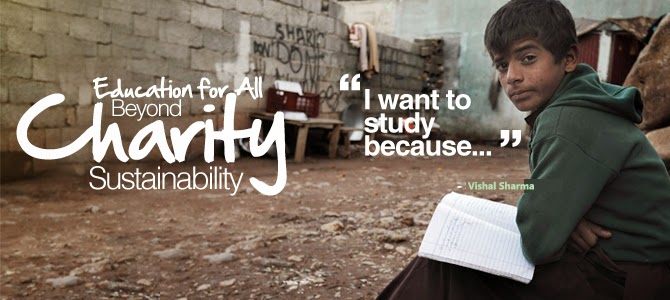Since 2014, The Help India, an ngo (non profit) based in Basti, Utter Pardesh, India, has been working for the welfare and educational needs of street children. These children have fallen through society’s cracks. In Basti, Utter Pardesh, where The Help India works, the problem is chronic. Street children are forced to do work including rag-picking, begging, prostitution and domestic labour. The Help India offers the children the opportunity to work in a different way through the production of handicrafts while providing a safe environment amongst teachers, staff and volunteers.
\

The Help India began as the vision of two people, a Sociology professor, and a local teacher, Vipul and Vijay, both passionate about the rights of street children. It began with voluntary teaching in the slums. After few month, The Help India an NGO in Basti, Utter Pardesh, India- improves the lives of approx. 40 street children in Basti, Utter Pardesh and around India, through its programmes including homes, vocational and academic teaching, street schools, medical care, and sanitation. Many indian volunteers also come each year to teach English, Math etc, or provide administrative support.
Many street children come to the centre through the phone support service, Child Line, or through our outreach staff at railway stations. Once a child has been housed in one of The Help India’s homes, trained staff and teachers assist them with their emotional and academic education.
One of the main sources of income for The Help India is generated from the production of working and accessories made by the children. The boy's is of superb quality, and you can buy it knowing that the proceeds are funding The Help India’s projects. The books and handicrafts provide the child with income, as well as the valuable vocational skills of development making for the girls and sewing for the boys.
Through these programmes, and the dedication of the teachers, staff and volunteers, children gain confidence, social values and most importantly, skills which will carry them further in life. If you’d like to help India through voluntary work, donating for, please contact us!
\

The Help India began as the vision of two people, a Sociology professor, and a local teacher, Vipul and Vijay, both passionate about the rights of street children. It began with voluntary teaching in the slums. After few month, The Help India an NGO in Basti, Utter Pardesh, India- improves the lives of approx. 40 street children in Basti, Utter Pardesh and around India, through its programmes including homes, vocational and academic teaching, street schools, medical care, and sanitation. Many indian volunteers also come each year to teach English, Math etc, or provide administrative support.
Many street children come to the centre through the phone support service, Child Line, or through our outreach staff at railway stations. Once a child has been housed in one of The Help India’s homes, trained staff and teachers assist them with their emotional and academic education.
One of the main sources of income for The Help India is generated from the production of working and accessories made by the children. The boy's is of superb quality, and you can buy it knowing that the proceeds are funding The Help India’s projects. The books and handicrafts provide the child with income, as well as the valuable vocational skills of development making for the girls and sewing for the boys.
Through these programmes, and the dedication of the teachers, staff and volunteers, children gain confidence, social values and most importantly, skills which will carry them further in life. If you’d like to help India through voluntary work, donating for, please contact us!











.jpg)






